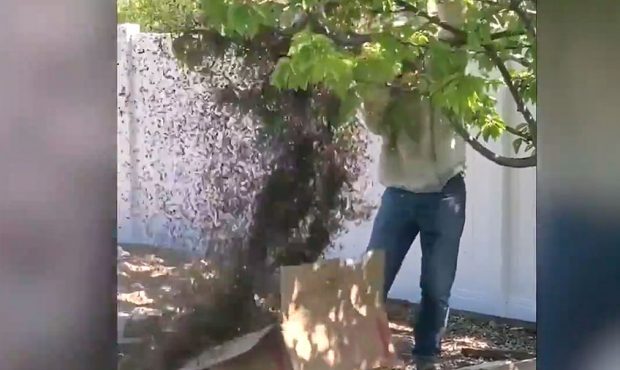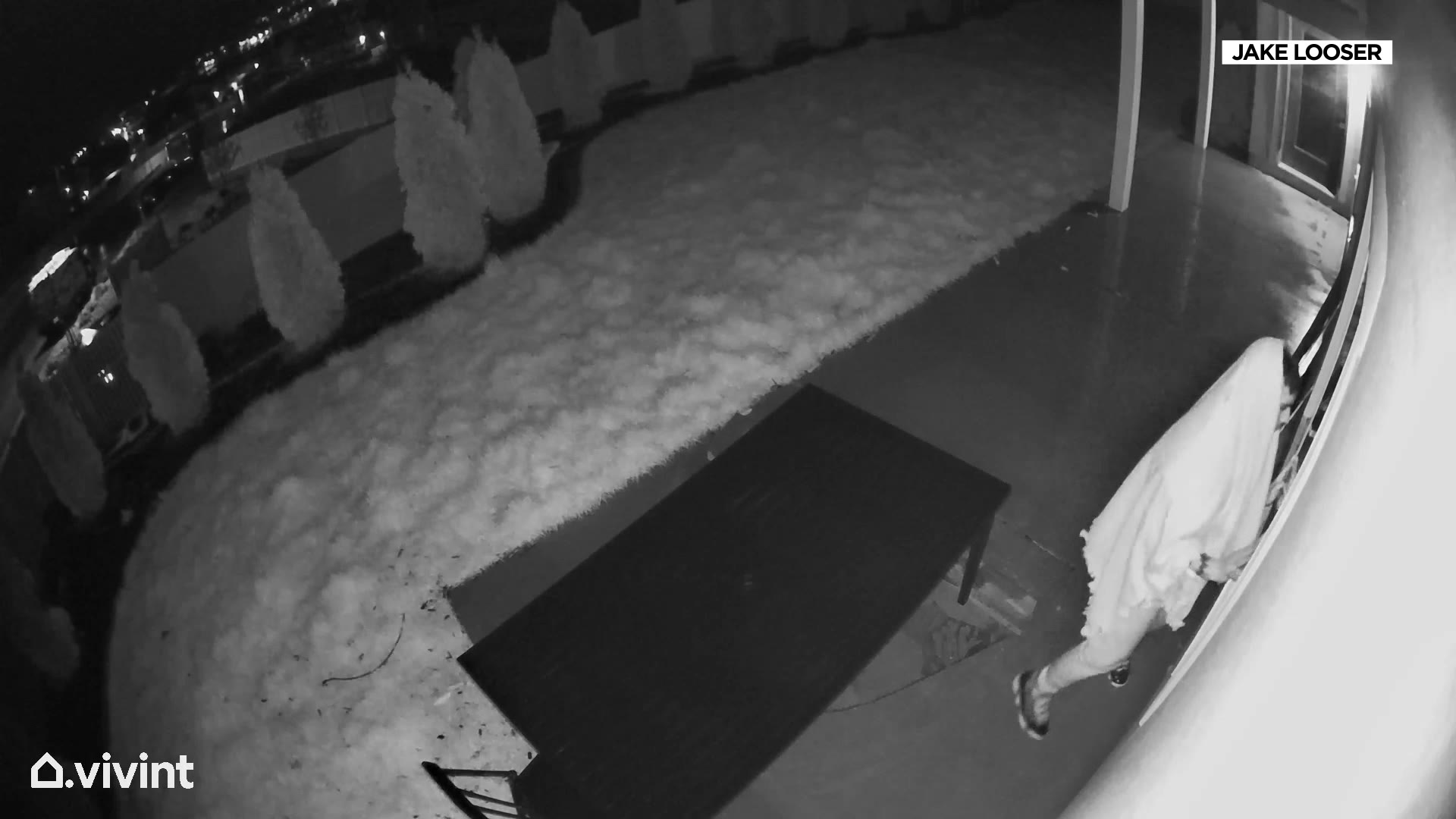Bee Swarms Increasing With Utah Warm Weather
Apr 27, 2020, 8:51 PM | Updated: Apr 28, 2020, 9:59 am

SYRACUSE, Utah – Large amounts of bees have taken people by surprise in the Beehive State. It’s normal for them to swarm this time of year, but at least one state expert said there’s good reason to believe the bees are bouncing back.
The Rollins family had a football-sized swarm in their back yard in Syracuse. It was still only a fraction of what was there the day before.
Their experience was one of many reported to KSL over the last week.
Experts said it’s normal to see increased bee activity in spring, but there may be a bit more of it going around.
Holy moly. Look at those bees, at yet another home in Syracuse!!! We're hearing about a lot of bee swarms, here at @KSL5TV. Tonight at 6pm, one expert with the Utah Department of Agriculture explains why we may be seeing more than in years past. #Bees #beeswarm pic.twitter.com/OZwkZVJ33t
— Mike Anderson (@mikeandersonKSL) April 27, 2020
Tiffany Rollins said they discovered a bee swarm in their tree Sunday. The number of bees accumulated quickly,
“I would say within 15 minutes, that showed up – that mound of bees – that swarm of bees showed up,” she said. ‘It kind of freaked me out. The sky was just speckled with bees, and the sound was so loud.”
Beekeepers estimated around 50,000 bees in the Rollins’ tree.
The Rollins were not the only ones. Their neighbors, the Plants, had about 20,000 bees show up the week before. A home in west Layton saw about 150,000.
The Archibald family was enjoying a day out at Sand Hollow State Park in Hurricane over the weekend. They said the bees wouldn’t leave their car alone, amassing over the rear passenger side tire of their truck.
Even after they left the area, the swarm came back. Beekeepers had to show up twice.
KSL spoke about the bee activity to Stephen Stanko, an apiary inspector with the Utah Department of Agriculture.
“Hives have managed to come through winter much healthier than they normally otherwise would, said Stanko.
Stanko said state efforts to help beekeepers keep their populations healthy appear to be paying off, including better combating of what are called varroa mites.
“Varroa mites are a parasite that feeds on honeybees,” he said. “They also transmit viruses within the colony.”
Stanko said he believed lower numbers of the mites may have led to higher numbers, and a greater need, for bees to get out and set up new hives.
“We did also see lower rates in a bacterial disease that we see in colonies, called American foulbrood, which is a very devastating disease,” he said.
The overall increase in bees, regardless of the reason, isn’t a bad thing, Stanko said.
“We need them for pollination for our trees, and fruit and flowers, and… I just don’t want them taking home in my yard,” he said.
The honeybee population is doing better, but still threatened overall. Stanko said homeowners can help by planting flowering plants and simply following the instructions when you use pesticides, to use them properly.
And here’s the story! https://t.co/hyciQtbwuF
— Mike Anderson (@mikeandersonKSL) April 24, 2020













